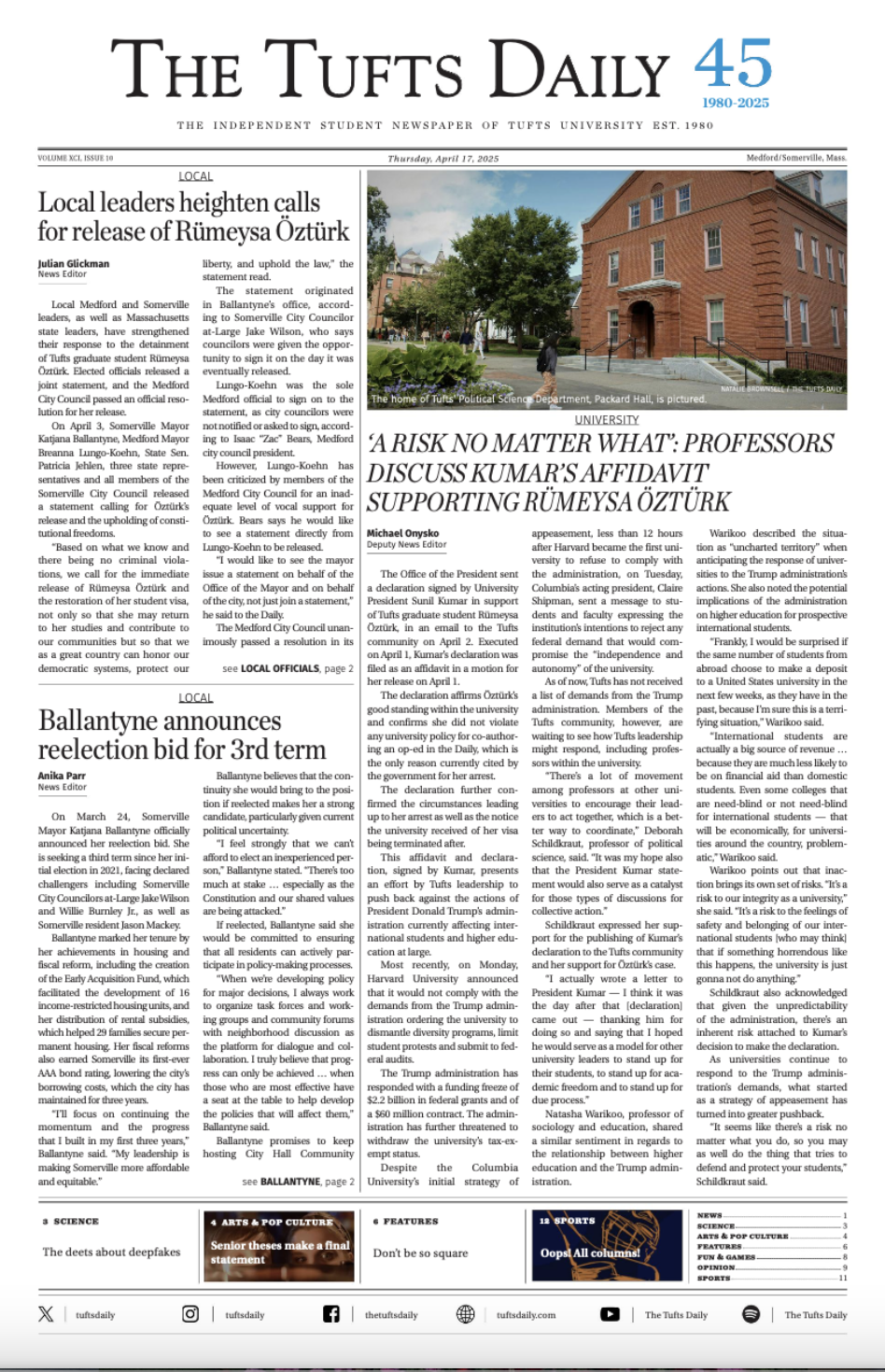As Tufts’ tuition is one of the most expensive among its peer institutions, according to a Tufts University 2018–19 Fact Book, and its institutional priorities must be oriented toward us, the students. Welcome to Funding Our Future, my weekly column to explore various facets of financial accessibility on campus. I’m here to get to the bottom as to why Tufts is so frugal when it comes to seemingly basic student needs. As a first-year, I’m committed to using this platform to establish a more financially-accessible future for Jumbos to come.
While Tufts lauds itself for its commitment to financial accessibility, one glaring truth stands in the way of making Tufts truly accessible: need-sensitive admissions. When Tufts reviews any application, domestic or international, admissions officers are privy to the student’s expected family contribution.
It’s no secret that Tufts is predominantly made up of an affluent population. According to a 2017 study by The New York Times' The Upshot, 77% of Tufts students come from the top 20%. Furthermore, 19% come from the top 1% (students with a household income of at least $630,000) while 11.8% come from the bottom 60% (a household income of less than $65,000). Before coming to Tufts, I did research to discover these staggering numbers. So when I chose to come here, I knew I was choosing to attend a school with the 10th-worst gap in economic inequality among the 2,000 colleges included in the NYT study.
When applying to colleges, I was under the impression that Tufts was need-blind in its review of undergraduate applicants — once on campus, I learned that I was wrong. Tufts’ need-sensitive admissions policy is a mechanism by which Tufts keeps out lower-income students in favor of more upper-income students. While Tufts is committed to meeting “100% of the demonstrated need of every admitted student,” its need-sensitive policy allows admissions officers to consider all applicants’ ability to pay in the admissions process. In practice, this policy allows admissions officers to admit an applicant who can afford Tufts’ tuition over an equally qualified applicant who cannot — partially or in full — once the university has run out of potential financial aid.
In order to adopt a need-blind policy in addition to meeting full demonstrated financial need, Tufts would likely need to significantly increase its endowment fund. As of June 30, 2018, Tufts’ endowment was $1.9 billion. Local peer institutions such as Boston College and Wellesley College maintain an endowment of $2.6 billion and $2.1 billion as of 2018, respectively. Both colleges are need-blind institutions and fully meet demonstrated financial need; Tufts meets full demonstrated financial need as well, but is need-aware.
Although Tufts would need to add a hefty sum into its endowment to adopt need-blind admissions for domestic and international students, Tufts must make this policy change a priority if it wants to continue to taut its financial accessibility. The Tufts Financial Aid Office must embrace need-blind admissions as a primary objective. The wealth gap on campus is unacceptable; we demand a commitment to more equitable admissions and a more financially accessible institution.
More from The Tufts Daily





